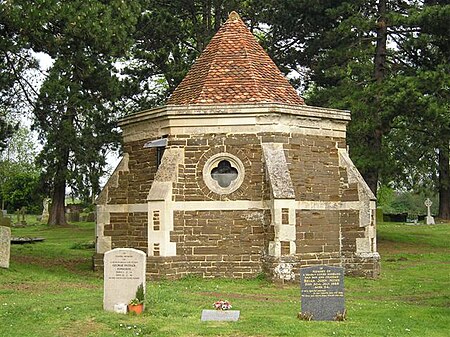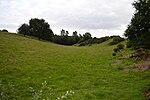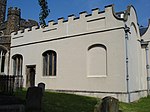Ailesbury Mausoleum

The Ailesbury Mausoleum situated in the churchyard of St Mary's Church, Maulden, in Bedfordshire, is a Grade II listed structure built in 1656 by Thomas Bruce, 1st Earl of Elgin (1599–1663) (father by his 1st wife of Robert Bruce, 2nd Earl of Elgin, 1st Earl of Ailesbury (1626-1685)), of nearby Houghton House in the parish of Maulden, for the purpose of housing the coffin and "splendid monument" of his second wife, Lady Diana Cecil (d. 1654), a daughter of William Cecil, 2nd Earl of Exeter and widow of Henry de Vere, 18th Earl of Oxford. In the opinion of the architectural historian Sir Howard Colvin (1991) it is one of the first two free-standing mausoleums ever built in England, together with the Cabell Mausoleum at Buckfastleigh in Devon.
Excerpt from the Wikipedia article Ailesbury Mausoleum (License: CC BY-SA 3.0, Authors, Images).Ailesbury Mausoleum
Church Road,
Geographical coordinates (GPS) Address Nearby Places Show on map
Geographical coordinates (GPS)
| Latitude | Longitude |
|---|---|
| N 52.031 ° | E -0.4589 ° |
Address
Church Road
MK45 2AU
England, United Kingdom
Open on Google Maps









